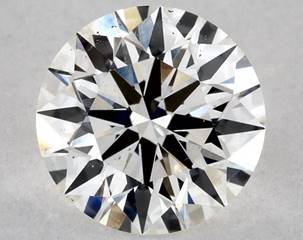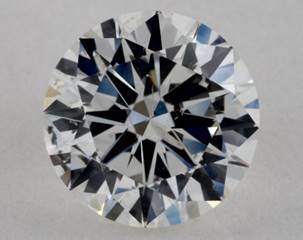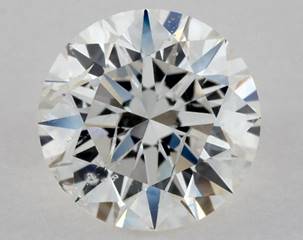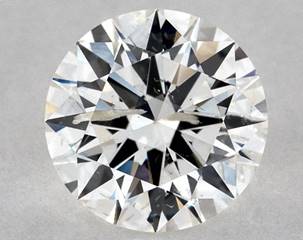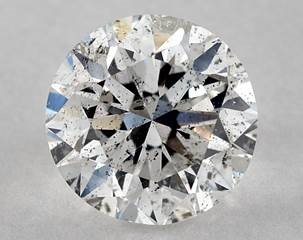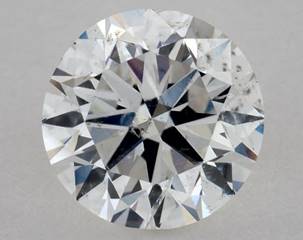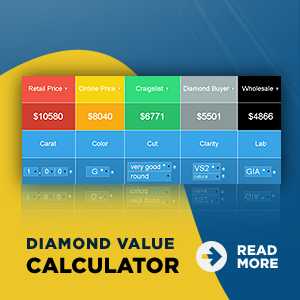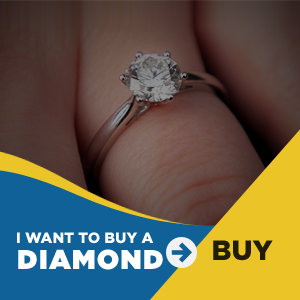At Diamond Karma, we’ve developed a pricing matrix to help you understand the value of your diamond. Enter in the key information about your diamond to see approximate retail prices, online prices, peer to peer pricing, and what a diamond buyer or wholesaler might pay for the diamond. Click here to check your value now!
Do you know the carats, color, cut, and clarity of your diamond? Use our simple diamond value calculator to determine what it’s worth!
Want to understand how diamond pricing works? Read on to see how the different attributes of diamonds affect their value in our pricing matrix.
How to calculate the price of a diamond

1. The size of diamond (carat weight)
Carat weight is the measurement of how much a diamond weighs. A metric ‘Carat’ is defined as 200 milligrams. Each carat can be subdivided into 100 points. This allow very precise measurements to the hundredth decimal place. the weight of diamond below one carat can also be described by its ‘points’ alone. Example, a diamond that weighs 0.49 carats could also be referred to as a ‘forty-nine pointer’. Diamond greater than one carat are expressed in carats and decimals. A 1.03 carats stone would be called/described as ‘one point oh three carats’.
2. Color ( GIA D to Z range )
The color evaluation of most gem-quality diamonds is based on the absence of color. A chemically pure and structurally perfect diamond has no hue, and consequently, a higher value. Based on The GIA Color Grading System measures the degree of colorlessness by comparing a stone, under controlled lighting and precise viewing conditions, to masterstones of established color value. Many of these color distinctions are so subtle that they are visible to the untrained eye; however, these distinctions make a very big difference in diamond quality and price.
The GIA color scale begins with D for colorless and continues through the alphabet to Z light yellow, brown, or gray. A diamond’s color grade is based on its tone and saturation, and requires an assessment of its absence of color. This means that the less yellow, brown, or gray there is in a diamond, the higher its color grade.
Each letter on the scale represents a narrow color range, not a specific point. And each masterstone marks the highest point or least amount of color in the range. A diamond with slightly less color than the I masterstone is considered H color, one with slightly less color than the H masterstone is considered G color and so on. Five diamonds graded H can have five very slightly different amounts of color, but they all must have less color than the I masterstone, and more color than or an equal amount of color to the H. If a diamond has less color than an E masterstone, it’s a D. This means there is no need for a D masterstone.
3. Clarity ( Flawless to I3 range )
The clarity grade characteristics in diamonds come in an endless variety of combinations, so there can never be one single description that automatically describes a grade. Natural diamonds are the result of carbon exposed to tremendous heat and pressure deep in the earth. This process can result in a variety of internal characteristics called ‘inclusions‘ and external characteristics called ‘blemishes‘.
Evaluating diamond clarity involves determining the number, size, relief, nature, and position of these characteristics, as well as these affects the overall appearance of the stone. Many inclusions and blemishes are too tiny to be seen by anyone than a trained diamond grader. To the naked eye, a VS1 and the SI2 diamond may look exactly the same, but these diamonds are quite different in terms of overall quality.
These five diamonds above were graded GIA as I1 clarity from James Allen
Five factors determine the overall impact that an individual clarity characteristic has on a stone’s appearance and grade. Those factors are;
A. Size–>size has a lot to do with how easy it is to see an inclusio. Generally, the larger and more visible an inclusion is , the lower the diamond’s clarity grade will be. And must consider the size of the inclusion in relation to the size of the diamond. In a diamond with inclusions of different sizes, one or two of larger inclusions usually establish the grade. If there are also smaller inclusions, they seldom affect the clarity grade.
B. Number–>when all other factors are equal, the more inclusions or their reflections you see face up at 10x, the larger the effect on the clarity grade. Because a diamond’s facets act as mirrors, inclusions might be reflected multiple times. Even when a small inclusion is only somewhat easy to see, reflections can make it more apparent. Remember that grades are set by counting them. A diamond with a number of minute pinpoints can still qualify as VVS. On the other hane, a single large, black, or centrally located included crystal could drop the grade into VS, SI, or even I clarity.
C. Position/location–>Inclusions are most visible when they are directly under the table. Inclusions under crown facets or near girdle are usually difficult to see that is why you have to inspect the stone from several angles to find all its characteristics.
D. Relief–>relief is the contrast between an inclusion and its host gem. Relief can vary from high, or more apparent, to low, or less apparent. Usually, the more an inclusion differs in brightness, darkness, or color from its host, the more visible it is and the greater its impact on the clarity grade.
E. Nature–>nature refers to the type of characteristic and its effect on the diamond. Inclusions have more impact on clarity than blemishes. Graders must sometimes refine the clarity grade to a higher or lower level because of nature. Such as, internal graining is an optical irregularity that has far less impact on a diamond’s clarity that a physical break of similar size and appearance. A minute feather would have less impact on clarity than an included crystal of similar size and appearance due to its superficial nature.
Another factor to consider is an inclusion’s potential risk to the stone. Generally, a stone with significant durability problems would not survive the friction and the pressure of the cutting process, so durability rarely affects clarity. However, very deep feathers that extend from the crown to the pavilion, or that penetrate one-third of the way or more into the diamond, pose durability concerns and can lower the grade.
4. The make(Cut grade; Excellent, Very Good, good, Fair, Poor)
The cut plays the biggest role, more than any other factors, cut determines beauty and brilliance. A ‘D’ color even a Flawless diamond may lack beauty and brilliance due to poor cutting. To purchase a diamond that both beautiful and brilliant, search for a stone that’s well proportioned, then the balance color, clarity, and size with your budget. Each color and clarity grade sets a range of prices that overlap. Cut alone may cause as much as 55% variation in price for a specific color and clarity grade.
The cut grading system for standard round brilliant cut diamonds D to Z colors. Standard round brilliant diamonds are evaluated for one of the five possible cut grades: Excellent, Very Good, Good, Fair, poor. Cut grade is determined from a combination of measured parameters and visual observations.

Table size percentage, Pavilion Angle, Crown Angle, Lower Half Length percentage, Star Length, Girdle thickness %, Culet Size , and the degree of painting and /or digging out are all measured. Symmetry, Polish, Girdle Thickness. The combination allows the face-up appearance ( brightness, fire, scintillation, especially pattern seen when viewing a diamond
size and shape are two aspects of cut that can influence diamond color. The larger a diamond is, or the deeper its pavilion, the farther light can travel in it. This increases the amount of selective absorption that takes place and often leads to a richer, or more intense color.
5. Does it have fluorescence (very Strong, Strong, Medium, Faint)
Fluorescence is the emission of visible light by a material when it is stimulated by ultraviolet UV rays. About 1/3 of diamonds emit some degree of fluorescence. This means that fluorescence, if present, can be one of a diamond’s identifying features. When evaluating a diamond , whether it’s in the D to Z or the colored diamond range, the grader check to see if it fluoresces.
On the GIA Laboratory Diamond Grading Report, the fluorescence entry is a description, not a grade. The terms used for describing fluorescence are None, Faint, Medium, Strong, and very strong. If the fluorescence is Medium or strong, the grader also notes its color, so a stone might have Medium yellow or strong blue/white fluorescence.
To determine fluorescence, the grader places the diamond a short distance away from a source of long-wave UV radiation. If there’s no obvious fluorescence, or if the fluorescence is insignificant, it gets a classification of None. If a diamond does emit some light, the next step is to describe the degree of fluorescence. It takes experience with seeing many diamonds with varying degree of fluorescence before a grader can accurately describe fluorescence.
Example: if you’re purchasing a 1.03 carats G color and VS2 clarity, list price for 1.00 ct to 1.49 cts is $7900 per carat, you would take the 1.03×7900= 8137. If you purchasing a 1.34 carats would be 1.34×7900=10586 and the discounts between 5 to 20 percents depending the market conditions, availability and the demand of that diamonds. When you’re ready to buy, contact us we can help you get the most out of your money or visit James Allen

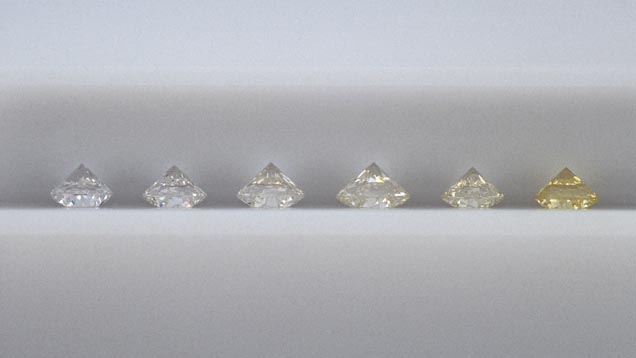
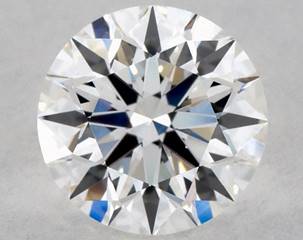 GIA 1.06 E VS2
GIA 1.06 E VS2